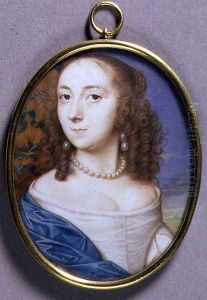John I & Hoskins, John II Hoskins Paintings
John Hoskins I and John Hoskins II were British artists renowned for their contributions to the art of miniature painting during the 17th century. John Hoskins I, born between 1585 and 1590, is often credited with elevating the art form to new heights, bringing a level of detail, realism, and sophistication previously unseen. His works were highly sought after by the nobility and royalty of his time, serving as intimate and luxurious representations of his subjects. John Hoskins I's miniatures are known for their meticulous detail, vibrant colors, and the emotional depth he was able to capture within the small scale of his medium. He was not just a painter but also a teacher, passing on his techniques and passion for miniature painting to the next generation, including his son, John Hoskins II.
John Hoskins II, continuing the legacy of his father, also made significant contributions to the art of miniature painting. Although the exact dates of his birth and death are less clear, he was active in the mid-17th century and worked under the shadow of his father's formidable reputation. Despite this, John II developed his own style and clientele, contributing to the evolution of miniature painting with his works. Like his father, he displayed a remarkable ability to capture the likeness and personality of his subjects, a skill that made the Hoskins' miniatures highly prized possessions.
The Hoskins' legacy in the world of art is significant, marking an important chapter in the history of British miniature painting. Their works not only provide a fascinating insight into the aesthetic preferences and cultural milieu of their time but also showcase the technical skill and artistic sensitivity required to create such enduring and captivating images. The father and son duo are remembered for their pioneering contributions to the miniature painting genre, ensuring their place in the annals of art history.
